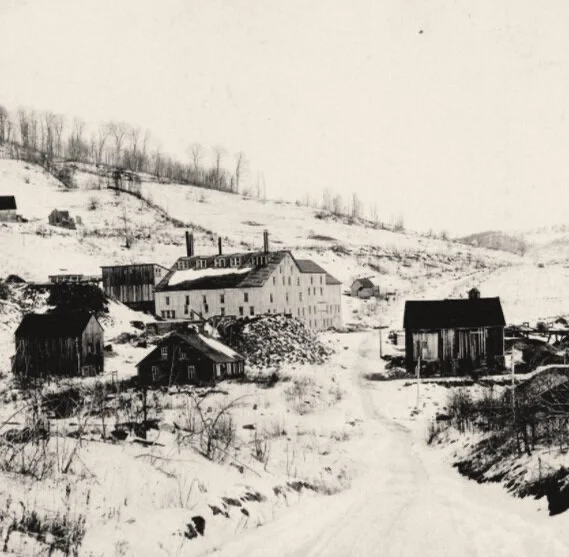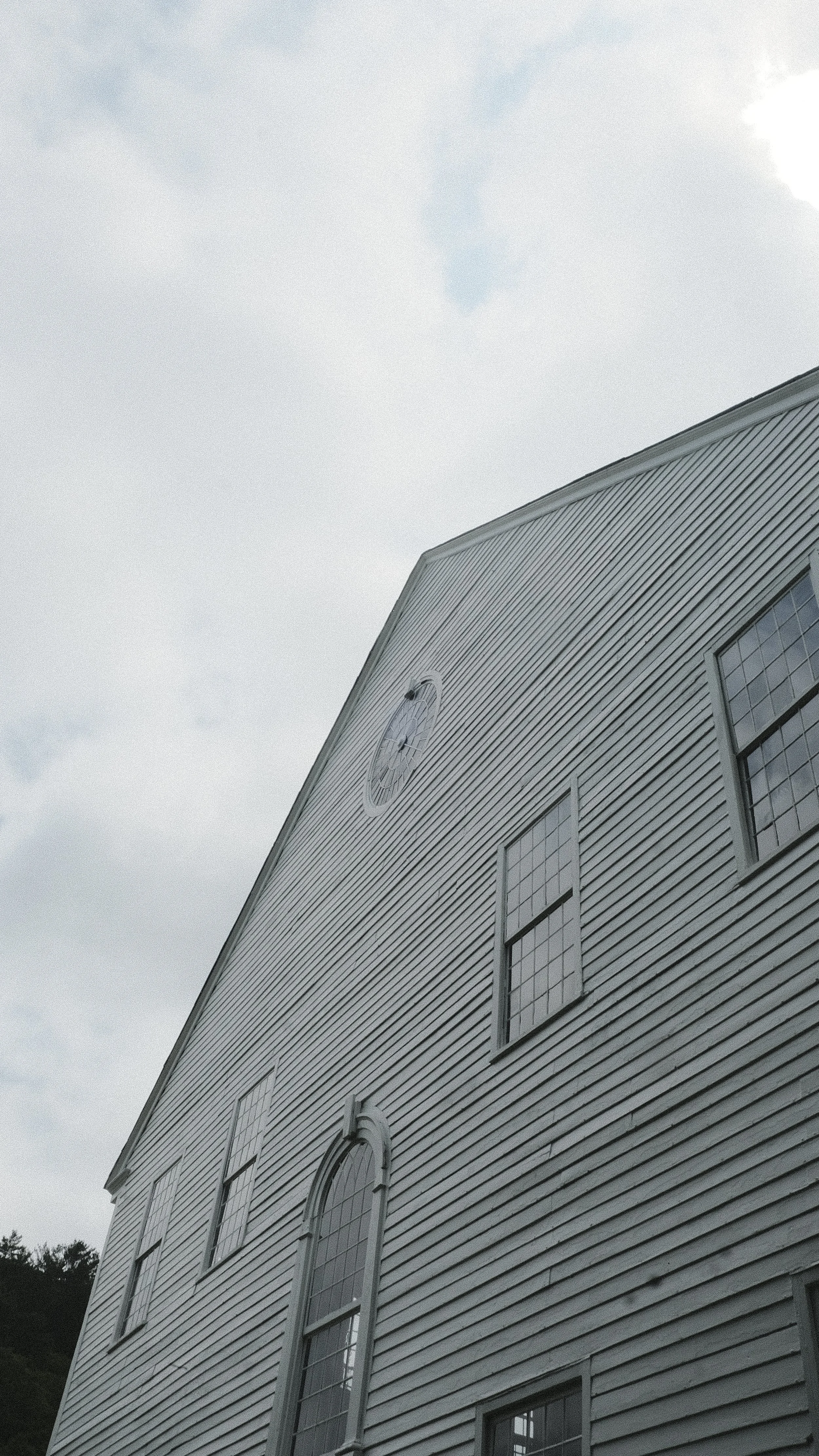THE JUSTIN MORRILL PROJECT
"My sympathies are all for the workingman, being one myself and with all my kith and kin of that sort … I was brought up on a farm and know something about how to plant corn, to pull flax, and to dig potatoes… I know it was a great disadvantage to me that I could not go to school, for I never have been to school since I was fifteen years of age. To obtain the little education I have, it has cost me many evenings, Sundays after church, and scraps of time that could be devoted to it, involving far more labor than it would have necessitated if I could have been sent to proper institutions of learning to have acquired a liberal education."
an immersive documentary on the life, times, and legacy of Justin S. Morrill
music by Margaret MacArthur

“The perpetuity of our free institutions, as well as the national prosperity and happiness of the people, can be best promoted by promoting the instruction and knowledge of the rising generation…of all the world, the United States can least afford to neglect the general and thorough culture of its people. Circumstances have made this question at the present moment of the very gravest urgency….if we are in large measure what our fathers have made us, the next generation will be sure to be more or less fashioned by those who today provide and direct our systems of education.”

“His loyalty to Vermont never lessened. He took pride in her history, her beauty of mountain, stream, and valley, and in her people of whom he was himself so splendid a specimen… many Vermonters find a local paradise in every valley and upon every hilltop, where the homestead is decorated by rollicking brooks and tree-arcaded roadways, ancient orchards, and fragrant clover-nooks, the well-tilled fields and the giant sugar maples, and where a virtuous, thrifty, and hardy race, untempted by other attractions, find few occasions to quit their quiet surroundin even for health or pleasure. Stable as their mountains, summer or winter, here they are never unhappy. With the thermometer annually ranging from 30 below zero to 95 above, why should Vermonters seek a change of air?
No one could live in Vermont, certainly not in any of the four southeastern counties, without being interested in farming. Orange County and Strafford in particular was an almost purely agricultural district and remains so to this day. Morrill had been familiar with farming from his infancy; all his dreams of the quiet, studious, contemplative life had a farm in Strafford as their setting… We shall probably understand him better, both in his achievements and his limitations, if we think of him as applying to the great affairs of the nation the lessons of his country store, his farm, and his house.
With that carefulness of such matters which was one of the special marks of an earlier day, he had planned and provided for a burial-place in the little cemetery at Strafford where lies the dust of many of his race. Long before, he had chosen the place- the top of a knoll from which there is a noble view along the valley and across many hills . It is a beautiful spot. There his tomb stands, solid and durable, of the granite of Vermont, dominating the place.
Below in full view lies the village. There is the spot where he went to school and the pond where he slid in winter. There is the store where he began his course in business. There stretches the road that was familiar to his feet for eighty years, the road he followed when he went out to see the world and took contentedly on his return. There are the descendants of his friends and of his father's friends who climb the slope on Sundays to his grave and bring visitors who know of his life and honor his record.”
The Life and Public Services of Justin Smith Morrill
William Belmont Parker, 1924
THE JUSTIN MORRILL PROJECT…
The American Antebellum period had not previously been top-of-mind for me, but the more research I did on Justin Smith Morrill, the more I found clear - and fraught - parallels and lessons that helped me see the current moment more clearly.
The massive accumulation of wealth among a few in the “Gilded Age,” the deadly exploitation of industrial workers, the anti-immigrant hysteria, and the decimation of native peoples in the “expansion West,” reached out to me with ghostly - indeed bloody - tendrils, signing, in their silence, our current condition. This project could not have been more relevant and enlightening.
The glaring contradictions of principle and practice, of fervor and callousness, of lofty ideals dampened by their restriction to a privileged few, served as guideposts - and flashing red lights - for me in this moment when techno-oligarchs amass unlimited powers that reach across international boundaries and scoff at any construct of law or ethics, were beacons for that which we each have, intrinsically, within us to grow our own powers. We are indeed a complex species, and perhaps Darwin was, in fact, correct… but then again, we are capable of so much more.
I write this with joyful appreciation of the many contributors to this project, through whom I have found renewed hope and a clearer vision of the influential and important role of our Great State of Vermont and its hard-working, sincere, and welcoming daughters and sons.
Vermonters seem to always show up when American Democracy needs the path forward cleared… from Ethan Allen to Bernie Sanders. And as we celebrate the legacy and ongoing influences of Justin Morrill in education, science, and government herein, despite all the ugly missteps and misconceptions engendered by the radical, even vicious, but nonetheless pervasive, transformation of the mid-1800s, perhaps it is our Northerly orientation, our clear night skies in January, the maple sap of March, and the Canadian wildfire smoke in July, that keep us humble.
Here, we still take Town Meeting Day as a celebration of our small and “slow democracy”, work the fields, and do our important scientific research, thankful for the natural beauty that surrounds, sustains, and inspires us… and we make great beer.
In this immersive website, born of just a few months of research, you will meet some of the folks who make “stuff” happen here in the name, and often because of, the legacy of Morrill. His reach is long, his presence felt, his guidance sought.
There were so many who supported this project – farmers, scientists, educators, students – mostly just because we are Vermonters and know full-well what is at stake when corruption and greed poison the trust inherent in public service.
I am no historian; just a media artist and educator whose goal here was to bring some of our conflicted past into the present; to shine a creative light upon it, to learn, wonder, and critique; to find relevance and solace, and, above all, to celebrate where we have been so we can make decisions, collectively, about where we might want to go together into the future.
Special thanks and heartfelt appreciation, though, need to be made explicit… for the grant that funded this project awarded by the Chancellor’s Office of the Vermont State University, to my research assistant from the Community College of Vermont, where I teach, Annika Crego; to the board members of the Friends of the Morrill Homestead and to the Executive Director of that National Historic site, Kumari Patricia; to John Freitag, Stafford, Vermont’s Town Historian; to Laura Trieschmann at the Vermont Department of Historic Preservation for supporting the on-going revitalization of Morrill’s home and gardens in Stafford; to Steve Picazio and his crew at the Leahy Library of the Vermont Historical Society in Barre, and to my many mentors, colleagues, collaborators, soothsayers, fellow-provocateurs, witches, and union comrades here in the North Country.
And last, but most important of all, to you… I hope you enjoy this offering…. and I thank you in advance for the time you might spend here.
I remain, as always, grateful for another day here in Vermont…
Stephen
Puck was founded by Austrian-born cartoonist Joseph Keppler and his partners as a German-language publication in 1876. The magazine took its name from the blithe spirit of Shakespeare’s Midsummer Night’s Dream, along with its motto: “What fools these mortals be!” Puck looked different than other magazines of the day. It employed lithography in place of wood engraving and offered three cartoons instead of the usual one. The cartoons were initially printed in black and white, but later several tints were added, and soon the magazine burst into full, eye-catching color.

